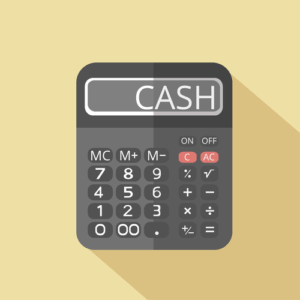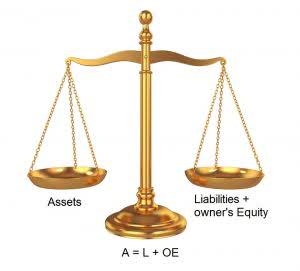
Accounts payable is recorded by crediting accounts payable and debiting the appropriate expense account when goods or services are received on credit. Yes, accounts payable is typically classified as a current liability on the balance sheet, as it represents a short-term obligation that needs to be paid within one year. The accounts payable account is recorded as an operating activity in the cash flow statement of the business.

What are some best practices for accounts payable recording and bookkeeping?
The main difference between accounts payable and expenses is how they income statement are recorded on a company’s financial statements. Accounts payable appear on the balance sheet, while expenses are recorded on the income statement. Accounts payable includes a variety of obligations owed to creditors and is classified under current liabilities on the balance sheet due to its short-term nature. Within this classification, accounts payable can be broken down into trade payables and non-trade payables.
- Other common examples of accrued expenses may include taxes, interest payments, goodwill, and accounts receivable.
- Accounts payable is a general ledger account that showcases the amount of money that you owe to your creditors/suppliers.
- You must process your invoices on a regular basis, regadless of the number of vendors you have, so you can follow the above procedure either weekly or fortnightly.
- But while visibility into AP should be restricted, it’s important to have more than one person involved to catch any potential issues.
- When one company transacts with another on credit, one will record an entry to accounts payable on their books while the other records an entry to accounts receivable.
- Under accrual accounting, companies record expenses when they are incurred rather than when they are paid.
- However, there is an indirect connection between accounts payable and the income statement.
What is Accounts Payable? Definition, Recognition, and Measurement, Recording, Example
When a business fails to pay its expenses, they become the liability of the business. Since the AP of a business can have a positive or negative impact on the company profits, it can indirectly impact the income statement entries. Since it represents a significant liability, a business must record AP separately from other liability accounts.
Balance Sheet
Therefore, an increase in accounts payable is reflected as an “inflow” of cash on the cash flow statement, while a decrease in accounts payable is shown as an “outflow” of cash. income statement accounts Cash flow statements reconcile net income to calculate how much cash entered or exited the company’s bank account, so AP appears as a positive value there. In this case the amount is added back to net income to account for the fact that cash has not been paid yet even though the expense was already recorded.
What is the invoice management process?

Alternatively, the debit may be allocated to an asset account if the purchase entails a fixed asset. The accountant debits the AP account once the bill has been paid to reduce the liability balance. This debit is matched with a credit to the cash account, which then reduces the cash balance. Accounts payable is the money a company owes its vendors, while accounts receivable is the money that is owed to the company, typically by customers.
What is the difference between accounts receivable and accounts payable?
For any purchasing organization, accounts payable is recorded as a short-term liability in the balance sheet. Should any of the goods or services listed above be purchased on credit by your organization, it is important to record the amount to AP immediately. This will ensure your balance sheet is kept up-to-date and accurately reports the total amount owed to your vendors, enabling transparency in your bookkeeping efforts and accounting process. The accounts payable department provides financial, administrative, and clerical support to an organization.
Cash Flow Statement Ratios
To expand your offerings and better serve your clients, today’s accountants need a complete solution to streamline operations and automate the accounts payable process. Striking variations on an income signal that a company’s finance team may need to make changes or adjustments, including switching suppliers, revising prices, or slashing the budget. Assume that on January 2 a company has some of its office equipment repaired. On January 4, the invoice for the repair is recorded with a $300 debit to Repairs and Maintenance Expense–Office Equipment and a $300 credit to Accounts Payable. On January 31, the company pays the invoice and debits Accounts Payable and credits Cash for $300.
Understanding accounts payable: FAQ

This method is time and resource-intensive without an accounts payable automation platform. Accounts payable compliance is the adherence of a business’s AP processes to relevant regulations, internal policies, and laws. Accounts payable compliance involves ensuring that all payment transactions (i.e. bills, invoices), made within the business maintain compliance with legal requirements and industry standards. Enter Accounting CS, a professional accounting software for accountants that combines write-up, trial balance, payroll, financial statement analysis, and more. It’s designed for professional accountants who serve multiple clients, allowing flexibility to handle all types of industry and entity types. Accounts payable is a short-term liability, while expenses are operational costs incurred over an entire fiscal year.
- Accounts payable (AP) refers to the obligations incurred by a company during its operations that remain due and must be paid in the short term.
- In addition, maintaining accurate and up-to-date records of Accounts Payable is essential for reporting purposes.
- As such, businesses must ensure that their procurement processes are efficient to maintain accurate reporting practices while minimizing expenses where possible.
- Since it represents a significant liability, a business must record AP separately from other liability accounts.
- Yes, accounts payable is typically classified as a current liability on the balance sheet, as it represents a short-term obligation that needs to be paid within one year.
- For instance, 2/10 net 30 is the trade credit that your suppliers offer for the sale of goods or services, meaning you’ll receive a discount of 2% if you pay the amount due within 10 days.
Save money with car insurance and credit card tips!
In addition, maintaining accurate and up-to-date records of Accounts Payable is essential for reporting purposes. These figures are typically included in financial statements such as the Balance Sheet https://www.bookstime.com/articles/horizontal-analysis and Cash Flow Statement, providing insights into a company’s liquidity position. To understand how effective your company is managing accounts payable, and thus get a clear picture of your cash flow, look to your average payable period. This accounting measure indicates how long you use credit before paying it off. The longer the average payable period, the better you’re maximizing your credit and working each dollar in your cash flow. You can also think of accounts payable as the opposite of accounts receivable, which refers to money owed to a company, typically by its customers.